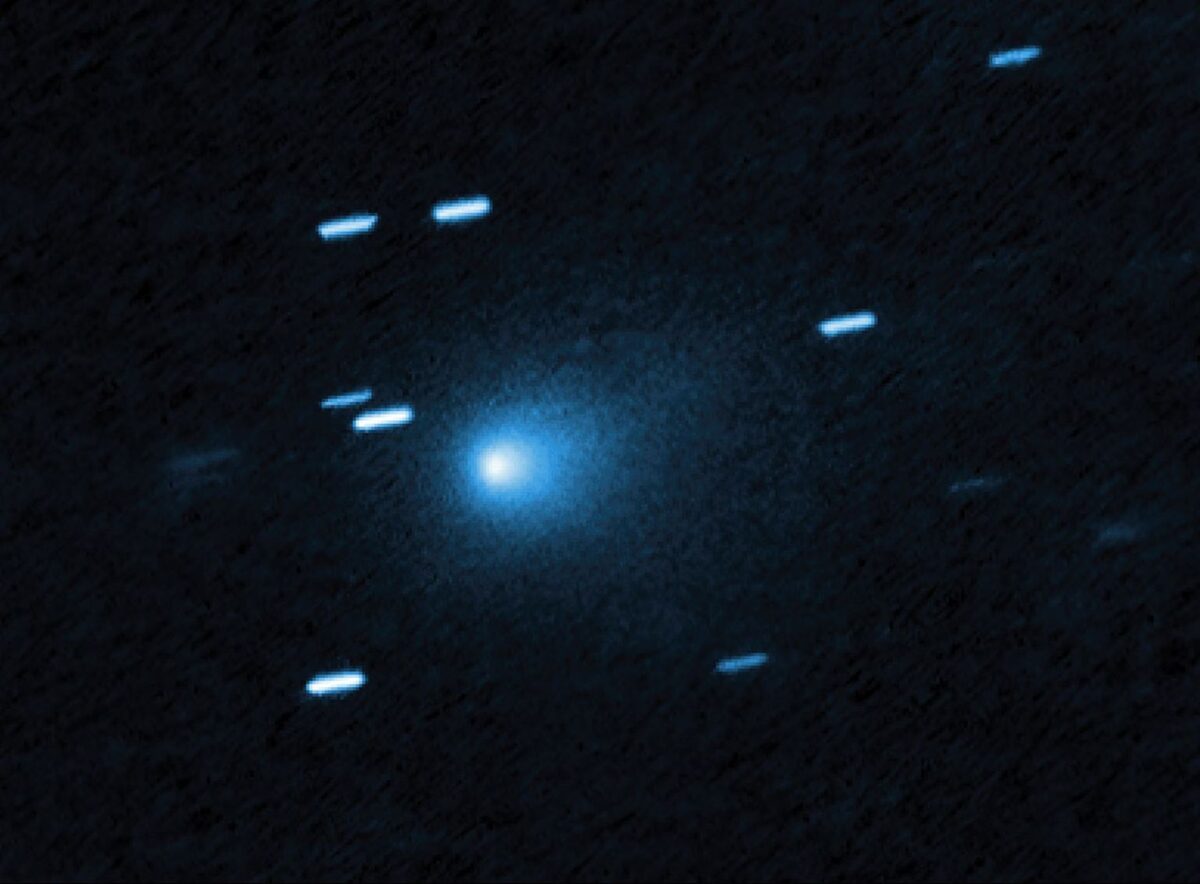A mysterious object from beyond our solar system is racing toward the sun at an astonishing speed of 61 kilometers per second – that’s about 137,000 miles per hour. This cosmic traveler, known as 3I/ATLAS, is only the third interstellar object ever detected, following ‘Oumuamua in 2017 and 2I/Borisov in 2019.
First spotted on July 1, 2025, by the NASA-funded Asteroid Terrestrial-impact Last Alert System (ATLAS) telescope in Chile, this visitor has created excitement among astronomers worldwide.
“We’ve never had an object like this to study before,” said Dr. Rebecca Allen, co-director of Swinburne’s Space Technology and Industry Institute.
The “3I” in its name stands for “third interstellar,” while ATLAS refers to the telescope network that discovered it. Pre-discovery observations have since been found dating back to June 14.
Unlike regular comets that orbit within our solar system, 3I/ATLAS is just passing through. Its highly hyperbolic orbit with an eccentricity of about 6.14 proves it originated outside our solar system and will eventually exit, never to return.
NASA’s Hubble Space Telescope captured a sharp image of the comet on July 21, showing a teardrop-shaped dust cocoon coming off its solid, icy nucleus. This distinctive appearance, often described as a “fuzzy snowball,” is created as the sun’s heat releases dust and gas from the comet’s surface.
“This latest interstellar tourist is one of a previously undetected population of objects bursting onto the scene,” said David Jewitt of UCLA, science team leader for the Hubble observations.
The size of 3I/ATLAS remains uncertain. Estimates range widely, with Hubble data suggesting an upper limit of 5.6 kilometers in diameter, while it could be as small as 320 meters across. Other estimates have suggested sizes up to 10-20 kilometers.
For scientists, this visitor offers a rare opportunity to study material from another star system. By analyzing the chemical signatures in its coma and tail, astronomers hope to determine whether it formed in conditions similar to our solar system or something completely different.
Matthew Hopkins, an astronomer from Oxford University, believes 3I/ATLAS may be incredibly ancient – possibly over 7 billion years old, which would make it older than our 4.5-billion-year-old solar system.
Similar Posts
The comet is currently between Mars and Earth’s orbit and will make its closest approach to the sun (perihelion) around October 30, 2025, coming within about 130 million miles (210 million kilometers) – just inside Mars’ orbit. Its closest approach to Earth will occur in mid-December at approximately 170 million miles (270 million kilometers).
Despite Harvard astronomer Avi Loeb’s controversial speculation about the object possibly being alien technology, most scientists classify it as a natural comet. Loeb has pointed to observations showing a “glow of light” ahead of the comet’s motion with “no evidence for a bright cometary tail in the opposite direction,” suggesting it might be generating its own light.
However, the scientific consensus remains that 3I/ATLAS is a comet, with the sun-facing dust plume being a natural phenomenon as its surface heats up.
For amateur stargazers hoping to catch a glimpse, the news is challenging. While the comet will likely brighten as it approaches the sun, it will remain faint and require large telescopes to observe. It should be visible through September before passing too close to the sun to observe, then reappearing on the other side by early December.
Most importantly for concerned readers: NASA confirms that 3I/ATLAS poses absolutely no threat to Earth, as it will remain at least 150 million miles away during its journey through our cosmic neighborhood.



















